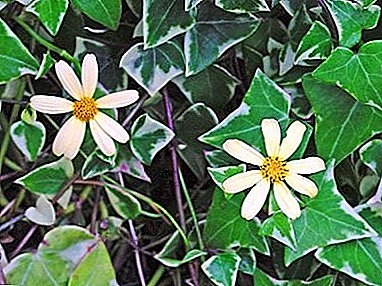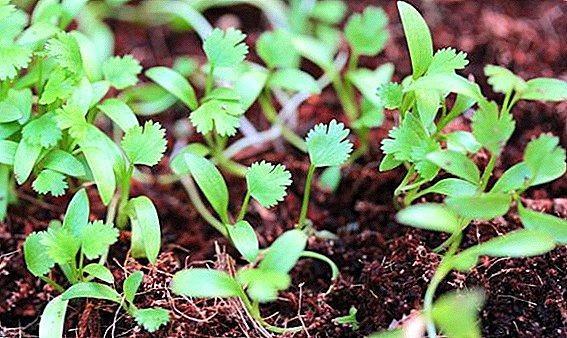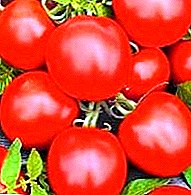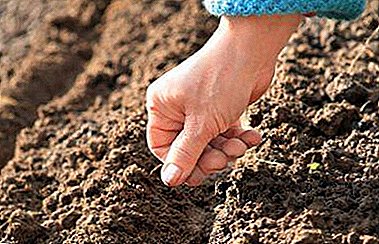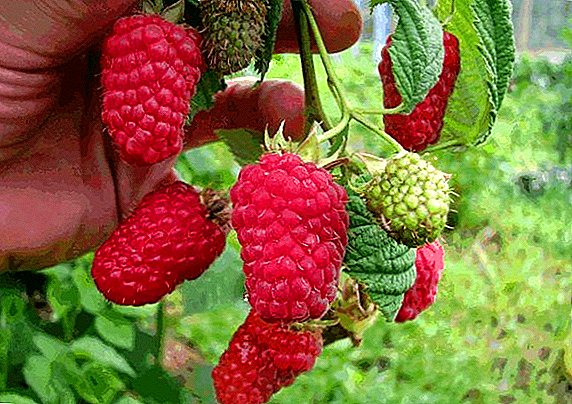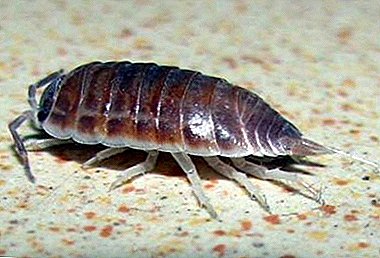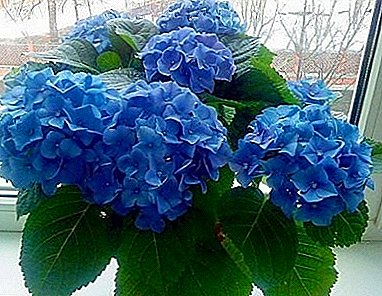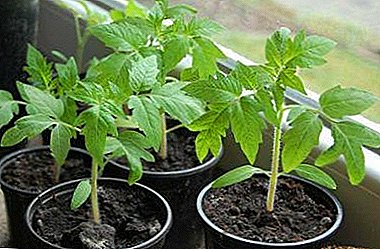
To grow tomatoes large and strong, you need to grow good seedlings. It is important to choose the right soil, high-quality seeds, to provide seedlings with sufficient light. But besides this, it is also necessary to correctly add additional nutrients.
One of the effective methods is foliar feeding of tomatoes. Read further: what is the difference between such a method and root dressing; what time it should be spent. Tell you in detail about the different drugs. And also what natural fertilizers can be used.
What it is?
Plants can take nutrients not only from the soil, but also absorb them in leaves.
Features
This method differs from the root dressing not only in the source of valuable elements - the root system or leaves, but also in the fact that top-dressing is often much more useful than putting nutrients directly into the soil, since the action of the active components begins in the first hours after processing.
Pluses top dressing:
- It is effective to carry out in wet weather immediately after the rain, since during this period the root system cannot provide the bush with all nutrients.
- It is effective in droughts and temperature drops.
Minuses:
- If after the treatment it rains, the result will be zero, the procedure will need to be repeated.
- The dosage of drugs must be treated very carefully, otherwise the leaves can get burned.
Time spending
Tomatoes planted in open ground are fed in the evening in dry weather. In the greenhouse, the procedure will be gratefully received by the plants in the morning hours.
Best ways
Urea solution
 This substance is also called carbamide. Mineral feed containing almost 50% nitrogen. Urea granules of white or slightly yellowish hue, have absolutely no smell. Substance plays a major role in green mass acquisition.
This substance is also called carbamide. Mineral feed containing almost 50% nitrogen. Urea granules of white or slightly yellowish hue, have absolutely no smell. Substance plays a major role in green mass acquisition.
Its deficiency is manifested in slowing growth, loss of leaves and pallor of their color, dropping ovaries. To prepare the active solution for processing will require 50-100 grams of urea per bucket of water. The resulting composition is enough for spraying 150 square meters of planting tomatoes.
Boric acid
 The favorite tool of gardeners, thanks to its affordable price. The substance helps to save the situation with a small formation of ovaries on the tomatoes and falling off of the inflorescences. Treatment with boric acid increases plant resistance to bacteria and pests.
The favorite tool of gardeners, thanks to its affordable price. The substance helps to save the situation with a small formation of ovaries on the tomatoes and falling off of the inflorescences. Treatment with boric acid increases plant resistance to bacteria and pests.
To prepare the solution will need a liter of hot water and one gram of substance. Use in the cooled look, The resulting composition is enough to handle ten bushes. Make a feeding once a week and a half, until it becomes noticeable disappearance of signs of lack of an element.
Potassium monophosphate
 It is a colorless crystals, well soluble in water. To understand that tomatoes lack potassium can be in appearance: they are partially green. The introduction of this component has a positive effect on the taste of the vegetable and contributes to the prevention of fungal diseases.
It is a colorless crystals, well soluble in water. To understand that tomatoes lack potassium can be in appearance: they are partially green. The introduction of this component has a positive effect on the taste of the vegetable and contributes to the prevention of fungal diseases.
To prepare the active solution, it is necessary to dilute the substance in a ratio of two grams per liter. Spraying should be done twice, before the formation of buds and during the fruiting period.
Calcium Nitrate
 It contains a large amount of nitrogen, but it acts softer than urea. By introducing a substance, you can achieve a quick set of green mass and increase the number of fruits. Calcium deficiency causes vertex rot on tomatoes and leaf curling.
It contains a large amount of nitrogen, but it acts softer than urea. By introducing a substance, you can achieve a quick set of green mass and increase the number of fruits. Calcium deficiency causes vertex rot on tomatoes and leaf curling.
To prepare the healing solution, a tablespoon of the product is diluted in ten liters of water. The resulting composition is enough to handle about six bushes, spraying should be carried out immediately after rooting seedlings.
Superphosphate
 The substance helps to increase the number of ovaries and accelerate the ripening of fruits. Also useful as a prophylaxis for the fall of the green mass. There are two ways to prepare superphosphate:
The substance helps to increase the number of ovaries and accelerate the ripening of fruits. Also useful as a prophylaxis for the fall of the green mass. There are two ways to prepare superphosphate:
- Dissolve teaspoon of crushed product in a bucket of hot water.
- Dissolve two tablespoons of superphosphate in a liter of hot water and infuse for 24 hours. The bright part of the resulting solution is poured into a bucket, mixed with a micronutrient tablet and a teaspoon of potassium sulfate. Add the missing water to the bucket.
The compositions are made strictly separately.
The resulting ten liters of solution is enough for about 50 bushes of tomatoes.
Epin
 Epin is a phytohormone obtained by chemical means. Increases the ability of plants to withstand stress factors. Effective even on marginal land.
Epin is a phytohormone obtained by chemical means. Increases the ability of plants to withstand stress factors. Effective even on marginal land.
The solution is prepared at the rate of six drops of epine per liter of water. The first treatment should be carried out a day after planting, it will contribute to the rooting of seedlings and their protection from diseases. Subsequent treatments are carried out in the formation of buds and flowering of the first brush.
Natural fertilizer
Ash based
 Wood ash for tomatoes is a source of calcium, magnesium, potassium and other trace elements.
Wood ash for tomatoes is a source of calcium, magnesium, potassium and other trace elements.
Spraying the solution effectively after a cold spell. or prolonged rains. 100 grams of ash is dissolved in 10 liters of water and infused during the day.
Processing is carried out at the flowering stage.
Milk serum
 Serum contains beneficial bacteria that can protect tomatoes from fungal diseases.
Serum contains beneficial bacteria that can protect tomatoes from fungal diseases.
Serum diluted with water in a ratio of 1: 1 and preventive treatments are carried out every ten days.
If there are signs of phytophthora on the plant, spraying can be done everyday.
Garlic sprays
 Using such sprays It is possible to prevent damage to the plant by the most dangerous fungal infections. To do this, you will need to pour one and a half cups of crushed garlic heads and arrows with ten liters of water and leave for a day. After that, strain and add two grams of potassium permanganate.
Using such sprays It is possible to prevent damage to the plant by the most dangerous fungal infections. To do this, you will need to pour one and a half cups of crushed garlic heads and arrows with ten liters of water and leave for a day. After that, strain and add two grams of potassium permanganate.
The first treatment should be carried out at the time of formation of the ovaries, followed every two weeks.
The main part of the elements should come to the plant from the soil. Fertile soil is a guarantee of a good harvest. Foliar application is an additional measure for tomatoes, acting in conjunction with fertilizers applied through the soil. Only balanced root and foliar dressing can provide excellent fruit bearing culture.


